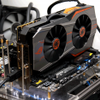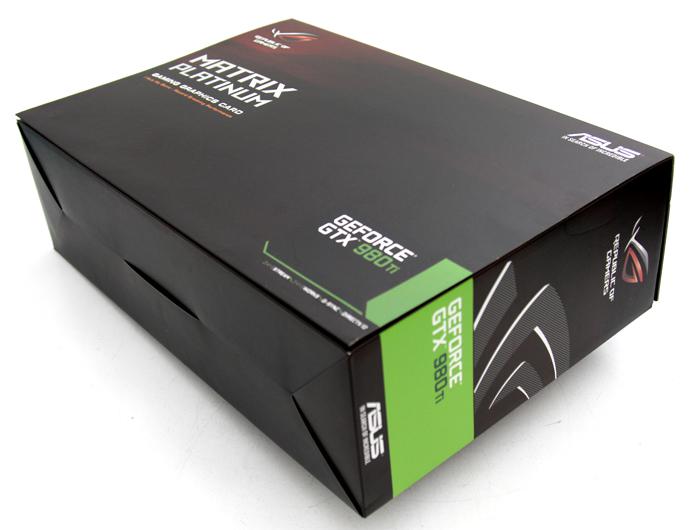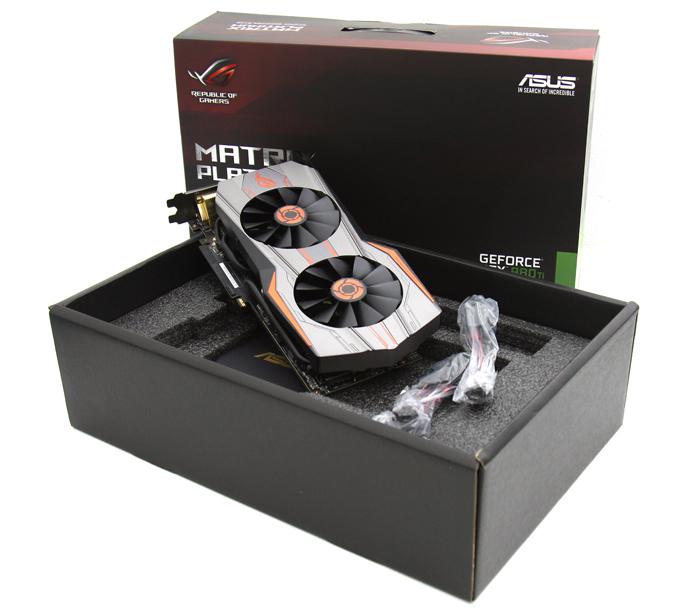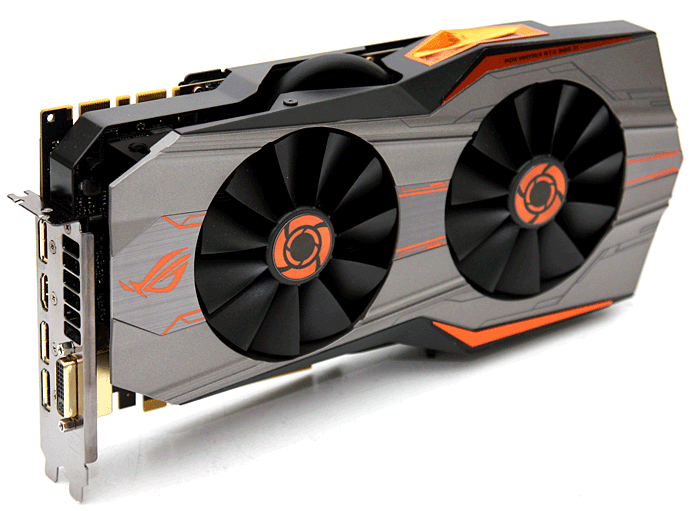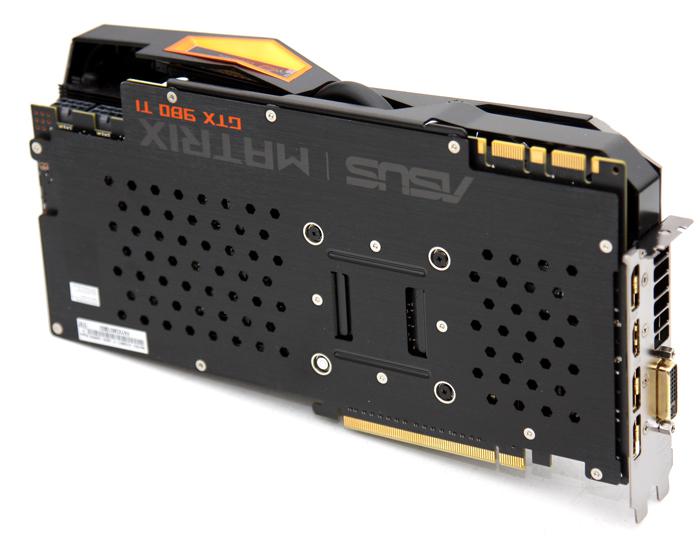Product Showcase
Product Showcase
Let's start with our photo-shoot. A few pages that show the ins and outs with photos, all taken with an in-house photo-shoot of course.
So we test the ROG Matrix model specifically, which comes with a faster standard clock frequency. A DIGI+ VRM has been assigned together with a strong acclaimed 12-phases for the GPU and two for the memory.
We haven't checked under the hood, but often this is 6 phases, and then two doubled up on mosfets etc. Anyway, the ASUS GeForce GTX 980 Ti is offered as a Matrix Edition. The PCB is completely customized and now built and fabbed by machine, no more humans inserting DIP components onto the PCB. The new PCB, albeit covered up, looks fantastic and very clean. Next to that, the cooler is now overhauled to DirectCU revision II. The card is offered in a three slot design. You will spot that matte black PCB with, on it, two 8-pin power headers to feed the Matrix.
The MATRIX platinum edition has higher factory clocks, quite impressive as well. The default mode base clock is clocked at 1190 MHz, with a boost allowance to 1291 MHz. The memory is clocked at a modest 1800x4 = 7.2 GHz (effective data-rate) on its 384-bit wide memory bus that ties to 6GB of GDDR5 memory.
The new flagship card is based on the GM200 GPU and features a full-custom PCB with a SAP2 14 stage power supply section coupled with two 8-pin PEG connectors. The PCB comprises of an anti-cold bug switch called Memory Defroster as well as the Safe Mode button for one-press VBIOS reload, but that is for the liquid nitrogen overclockers, of course.
The reference card will have a power design of roughly 250 Watts, but due to the high clocks and extensive tweaking design this card consumes way more, in the 300 Watt range as we'll show you later. Check out the backside where there is a thick sturdy metal alu-plate with plenty of venting spaces applied as well. ASUS calls their backplates, the fortifier.
